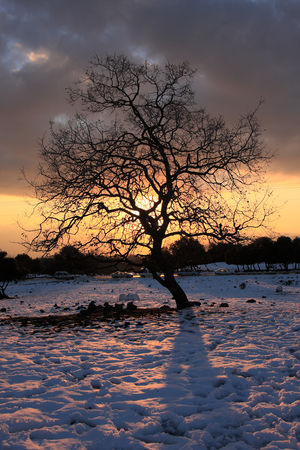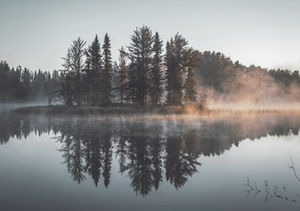
Yule occurs at the Winter Solstice, around the 21st or 22nd of December. Because the solstices and equinoxes are solar events, the dates may vary from year to year. Yule marks the longest night of the year and the shortest day. It is one of the four turning points of the year, a threshold time. On this night, the Holly King is slain by the Oak King. This is the time of the conception and incarnation of the Wonder Child.
It is also the time of the Mother. There is no coincidence, only significance, in the fact that Christians celebrate the birth of Jesus on December 25th only a few days after Yule. Like all of the ancient holy days, It is not merely a day; it is a season. The season is bounded about with ancient traditions, all showing the great respect originally accorded to these days, for this solstice is the season during which the sun is reborn. As the sun is reborn, so is the year.
Today we look to the traditions surrounding the Christmas season to discover the more ancient customs. In some places in the British Isles, it is the custom that the first person up on Christmas day should open the front door and sweep the ‘trouble’ out of the house with a broom. Anyone wishing to sweep their troubles away on Christmas day had better already have a broom. It is bad luck to make or purchase a broom from Christmas to 12th night, which is January 6th.
The underlying theme of Yule is the battle between the Holly King and the Oak King. This tradition survives to this day. In some places in Ireland, Scotland and Britain, Wren Boys go house to house with an effigy of a wren on a bed of holly begging pennies to bury the wren. The wren is the bird of winter just as the robin is the bird of summer. To bury the wren is to bury winter. At one time, and that no so long ago, wrens were killed as part of this custom. At this season, the Oak King, also called Robin Redman, appears wearing a crown of oak leaves and acorns. The departing Holly King, who is associated with both the wren and the deer, gives gifts to his ‘heirs’ the Wren Boys. The Holly King, of course, evolved into Saint Nicholas and later into Santa Claus. The Winter Solstice story or legend concerns the battle between the Holly King and the Oak King. It is plain from the stories that the combat is voluntary.
There are many traditions relating to fires at Yule. It was bad luck to stir the Yule Log fire during dinner on Christmas day. It is still customary in some places in Britain and Scotland to save a part of the Christmas log unburned until the following Christmas when it is burned with the new log. This practice keeps the home safe from fire. The burning of the Yule log is very ancient. Ash, not pine, was the preferred wood. Ash is the tree on which Odin hung when He sacrificed His eye to receive the wisdom of the runes. In much of Western European mythology, Ash is the World Tree the tree the shaman ascends and descends to enter the Otherworlds. The Ash is the axis of all the worlds and, as such, is the axis of the heavens. The sun, moon, and all the stars revolve around that axis. That is why, at the Winter Solstice, when the new sun is being born the Ash is ‘sacrificed’ through fire.





